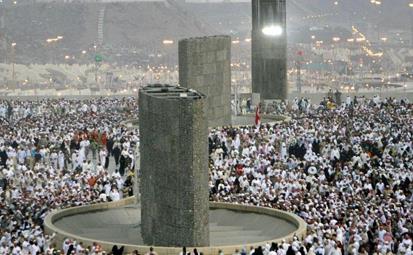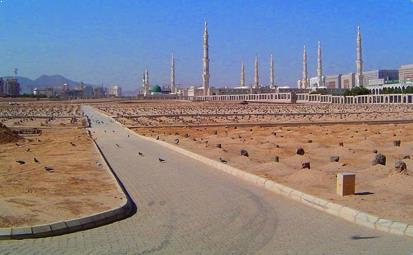The desert of Arabia played an important role in the history of Islam. This is the place where two major life-changing events took place, the birth of Islam and the revelation of Holy Quran. Makkah is the birthplace of our beloved Prophet Muhammad (pbuh) and the first message was revealed to him here. The grand mosque of Masjid-ul-Haram is also located in Makkah. Therefore, it is a city of greater significance and Muslims from all over the world travel to this sacred city for ziyarat. Every year millions of pilgrims visit Makkah for Hajj and Umrah. They also visit all the popular pilgrimage places in Makkah and get an in-depth knowledge about Islam and the life our Prophet and his companions led in this city. Below are the top Ziyarat (Ziarat) places to visit in Makkah if you are planning to travel to the Holy city:

Ka’abah
The Ka'aba is a structure covered with a black silk cloth, known as the Kiswa and decorated with gold-embroidered calligraphy with an important cornerstone known as the Black Stone (Hajri Aswad). During the Hajj pilgrimage, pilgrims gather around the Ka'aba and circumambulate it seven times.
The centre of Islamic world and the most important piece of architecture in Islam, Kaaba is the first place of worship constructed centuries ago by Prophet Ibrahim (AS) and his son Prophet Ismael (AS). Over the ages, it has undergone several changes due to natural calamities and renovations. One of the biggest renovation happened during the time of Prophet Muhammad (pbuh) himself. It is believed that this cube-shaped stone structure was built on the same foundation where Prophet Adam (AS) constructed a sanctuary to worship Allah the Almighty. Today, thousands of people circle the Kaabah while performing tawaf 24 hours a day and millions of Muslims across the globe face the direction of Kaaba while offering salah five times a day.
Cave of Hira
The Cave of Hira is famous for being the location where the Prophet Muhammad (PBUH) received his first revelation and where the Quran was first revealed. The Cave is about 12 ft in length and 5.5 ft wide, located 2 miles from Makkah on the Jabal al-Nour mountain.
Prophet Muhammad (pbuh) received the first revelation of the Quran in the Cave of Hira in the month of Ramadan in 610 CE. Lying about 2 miles from the holy Kaabah, Cave of Hira is small in size, around 4 meter in length and one and half meter in width. Prophet (pbuh) first began to have revelations in the form of dreams that came true. He would often go to Cave Hira to meditate in solitude for a number of days. He would stock up and take provisions with him to stay at an extended period of time. This went on for some time until Truth was revealed to him through the angel Jibreel (AS).


Jabal-e-Rehmat
Jabal-e-Rehmat or Mercy Mount is situated in Arafat where a standing white pillar denotes the exact point where 'Syedna Aadam (Adam)' and 'Syeda Hawwa (Eve) AH' landed on the earth after descending from heaven. It is close to Masjid Nimrah, where Prophet Mohammed (PBUH) gave his last sermon and now Khutbah of Hajj is narrated and Zuhr & Asr prayers are offered.
Also known as Jabal-Ar-Rahmah or the Mount of Mercy, Mount Arafat is a hill in the valley of Arafat outside Makkah where Prophet (pbuh) gave his last sermon after completing Hajj. It is mandatory for pilgrims to leave Mina and reach Mount Arafat on 9th Dhu’al Hijjah and spend the day in praying, doing Dhik’r and asking for forgiveness from Allah (SWT). Standing in Arafat is an essential part of Hajj and it is considered invalid if a pilgrim fails to reach here.
Jamarat & Mina Jamarat
Situated 4.3 miles east of Masjid-al-Haram is Mina, where Hajj pilgrims sleep over night in tents on the 8th, 11th, 12th and some also on 13th of Dhul Hijjah. The three pillars of Jamarat are located in the Jamarat valley in the low-lying area of Mina. Here, pilgrims throw pebbles at the three walls and at the same place animals are sacrificed during the day of Eid ul-Adah.
An important part of the Hajj, Jamarat is the group of three stone pillars that are pelted by the pilgrims emulating Prophet Ibrahim (AS). The pillars represent the three locations where Ibrahim (AS) pelted stone at Shaitan when he tried to dissuade him from sacrificing his son. The three pillars named Jamarat-al-Oola or Jamarat-e-Sughra (first or the small Jamarat), Jamarat-al-Wusta (middle Jamarat) and Jamarat-al-Uqbah or Jamarat-Al Kubra (last or the largest Jamarat) have now been replaced with high walls of Jamarat to avoid accidents. A bridge has also been constructed for the pilgrims to easily perform the ritual.


Jannat-ul-Mu'alla
Jannat al-Mu'alla bears a significant place in the history of Islam. This is the place where the first wife of Prophet Muhammad (PBUH), Hazrat Khadija (RA), along with other family members is buried. Many people visit this place on their Hajj and Umrah pilgrimage to pay homage to the members of the Prophet’s family (AS).
Located in a valley east of the Masjid al-Haram near the Masjid Jinn, Jannat-ul-Mu’alla is the historical graveyard in Makkah where several members of Prophet Muhammad’s (PBUH) family and his companions are buried. Over the years, several domes and structures had been built or rebuilt over the famous graves. In the year 1925, many tombs were demolished in this cemetery despite protests by the international Islamic community. Jannaat-ul-Baqi in Madinah was also demolished the same year by King Ibn Saud.
Cave of Thawr
Mount Thawr or Jabal Thawr is the mountain with the cave where Prophet Muhammad (PBUH) and His companion Abu Bakr (RA) found refuge from the tribe of Quraysh for a few days, when they emigrated to Madinah from Makkah. After three days, when Quraysh abated their search, Prophet Muhammad (PBUH) and Abu Bakr left the cave and headed towards Yathrib (Madinah).
When the Prophet (pbuh) and Abu Bakr (RA) arrived in the cave, Abu Bakr entered first to ensure its safety and clear away anything that might injure the Prophet (pbuh). He found some holes in the cave and filled them with clothes. Prophet Muhammad (pbuh) entered after him and went to sleep on his lap. Suddenly, something stung Abu Bakr (RA) but he did not twitch fearing that he might wake up the Prophet (pbuh). The pain was so intense that tears began to run down his eyes and onto the Prophet’s (pbuh) face. Prophet (pbuh) woke up and saw Abu Bakr (RA) in pain. He applied his saliva to Abu Bakr’s injury and the pain disappeared.
